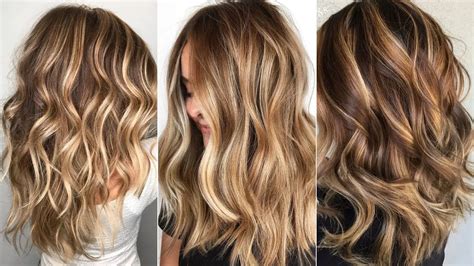Deciding between full highlight and partial highlight can be daunting, especially when trying to achieve the perfect hair makeover. Let’s dive deep into the key differences, benefits, and drawbacks of these two popular hair coloring techniques to help you make an informed decision.

Full Highlight: A Dazzling Transformation
- Full Highlight: In this technique, tiny sections of hair are bleached or lightened from root to tip.
- Effect: Full highlights create a striking, all-over lightened effect with a high contrast between light and dark sections.
- Best for: Individuals with dark or medium-brown hair who desire a dramatic color transformation.
Benefits:
- Dramatic and eye-catching look
- Low maintenance if touch-ups are performed regularly
- Can add volume and dimension to hair
Drawbacks:
- More time-consuming and expensive than partial highlights
- Potential for hair damage due to extensive bleaching
- Need for frequent touch-ups (every 6-8 weeks)
Partial Highlight: A Subtle, Sun-Kissed Glow
- Partial Highlight: Only select strands of hair are lightened, usually around the face and crown.
- Effect: Partial highlights create a natural-looking, sun-kissed glow without a drastic color change.
- Best for: Those seeking a subtle change or to enhance their natural hair color.
Benefits:
- Less expensive and time-consuming than full highlights
- Low risk of hair damage as fewer strands are lightened
- Requires less frequent touch-ups (every 10-12 weeks)
Drawbacks:
- Less dramatic color transformation
- May not be suitable for those with very dark hair
- Requires more frequent touch-ups to maintain vibrancy
Choosing the Perfect Highlight: Know Your Needs
Consider the following factors when selecting between full highlight and partial highlight:
- Desired Color Effect: Full highlights offer a bolder, more dramatic look, while partial highlights provide a more natural, subtle glow.
- Hair Health: Full highlights involve more bleaching, which can be damaging to hair. Partial highlights are gentler on hair.
- Time and Budget: Full highlights are more time-consuming and expensive than partial highlights.
- Maintenance: Full highlights require more frequent touch-ups to maintain color vibrancy.
Applications for Full vs Partial Highlights
Full highlights are stunning for occasions such as:
- Special Events: Weddings, proms, and other special occasions where a dazzling hair transformation is desired.
- Volume and Dimension: To create an illusion of thicker, more voluminous hair with added depth and dimension.
- Dramatic Color Change: To achieve a striking, all-over lightened effect that turns heads.
Partial highlights are perfect for:
- Subtle Color Enhancement: To add warmth and shine to natural hair without a drastic color change.
- Sun-Kissed Glow: To create a natural, sun-kissed appearance that flatters all skin tones.
- Low-Maintenance Color: For those seeking a low-maintenance color option that requires less frequent touch-ups.
Comparison Table: Full Highlight vs Partial Highlight
| Feature | Full Highlight | Partial Highlight |
|---|---|---|
| Hair Coverage | Entire head | Select strands |
| Color Effect | Dramatic, high-contrast | Subtle, sun-kissed glow |
| Maintenance Level | High (frequent touch-ups) | Low (less frequent touch-ups) |
| Hair Damage Risk | Higher | Lower |
| Cost and Time | More expensive, time-consuming | Less expensive, less time-consuming |
Conclusion
Whether you opt for full highlight or partial highlight depends on your desired color effect, hair health, time, and budget. By understanding the key differences and benefits, you can choose the perfect hair coloring technique to enhance your natural beauty and make a statement.
Frequently Asked Questions
- Which is better for thin hair: full highlight or partial highlight? Partial highlights can add volume and dimension to thin hair without weighing it down.
- How long do highlights last? Full highlights typically last 6-8 weeks, while partial highlights can last 10-12 weeks.
- Can I do highlights at home? It is recommended to consult a professional hairstylist for any hair coloring technique to ensure optimal results.
